Hol Dir den wöchentlichen SPARTANAT-Newsletter.
Dein Bonus: das gratis E-Book von SPARTANAT.
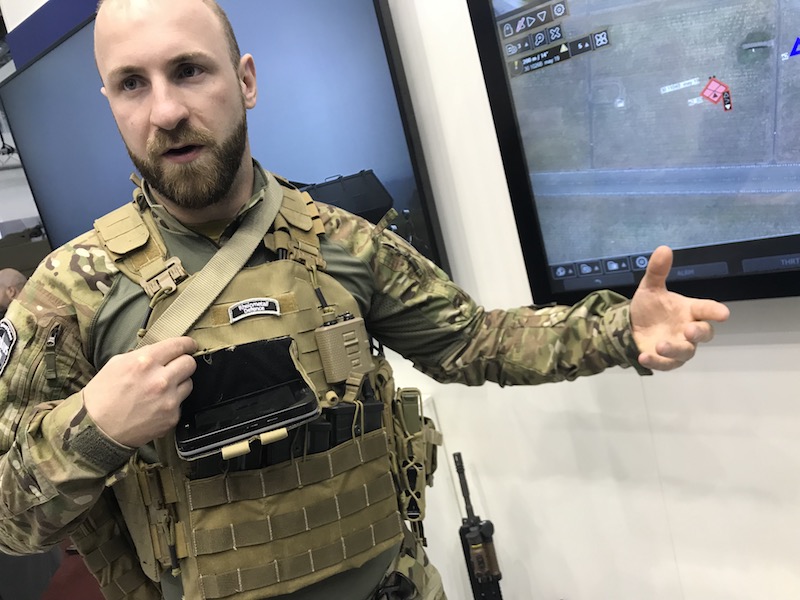
IDET 2019: Dieser Mann ist der Infantrist der Zukunft
Bei der IDET 2019 könnten wir uns auch den aktuellen Stand des Projekts GLADIUS 2.0 von Rheinmetall Defence anschauen, sozusagen die Fortführung des Infanteristen der Zukunft (IdZ) der Bundeswehr. Und was zu sehen ist, gefällt uns sehr gut, vor allem weil man sieht, dass die Praxis zugeschlagen hat.
Das erstmals 2017 vorgestellte Soldatensystem Gladius 2.0 baut auf Rheinmetalls großem Erfahrungsschatz mit Soldatensystemen auf. Es zeichnet sich dank seiner offenen Architektur und seiner Unabhängigkeit von spezifischen Endgeräten, wie z. B. Funkgeräten, durch eine hohe Skalierbarkeit und Flexibilität aus. Zusätzliche Komponenten lassen sich per„Plug and Play“ problemlos einbinden. Somit lässt sich das System auf unterschiedlicheKundenanforderungen anpassen.
Der Systemdemonstrator Gladius 2.0 wurde zunächst in drei beispielhaften Varianten konfiguriert. Die Variante „Basic“ ist die Standardversion für den Soldaten. Sie umfasst ein Smartphone als Führungsrechner und damit die Befähigung zur Teilnahme an der vernetzten Operationsführung. Die Variante „Advanced“ umfasst eine erweiterte Ausstattung z. B. für militärische Führer oder Spezialisten. Zu ihr gehören ein Tablet-Computer und eine erweiterte Kommunikationsausstattung zur Anbindung an höhere Führungsebenen. Die „Light“ Version ergänzt das Portfolio, indem speziellen Kräften eine ultraleichte Ausstattung angeboten werden kann.
 Der Demonstrator im Multicam auf der IDET trägt einen Plattenträger von Hexonia und dazu die ganze GLADIUS 2.0 Ausstattung. Das wär uns fast nicht aufgefallen – und das muss man als Kompliment verstehen. Die erste Generation vom IdZ war nicht nur sehr auffällig, sondern auch beim Anwender nicht ganz so beliebt, wie wir immer wieder gehört haben. Da ging es nicht um die technische Leistungsfähigkeit, den Soldaten am Gefechtsfeld digital zu vernetzen, sondern um die Größe und Handlichkeit der Komponenten. „Elektronischer Rücken“ allein klingt schon ein bisschen erschreckend … War auch ein ziemlicher Kasten, hinten am Mann.
Der Demonstrator im Multicam auf der IDET trägt einen Plattenträger von Hexonia und dazu die ganze GLADIUS 2.0 Ausstattung. Das wär uns fast nicht aufgefallen – und das muss man als Kompliment verstehen. Die erste Generation vom IdZ war nicht nur sehr auffällig, sondern auch beim Anwender nicht ganz so beliebt, wie wir immer wieder gehört haben. Da ging es nicht um die technische Leistungsfähigkeit, den Soldaten am Gefechtsfeld digital zu vernetzen, sondern um die Größe und Handlichkeit der Komponenten. „Elektronischer Rücken“ allein klingt schon ein bisschen erschreckend … War auch ein ziemlicher Kasten, hinten am Mann.
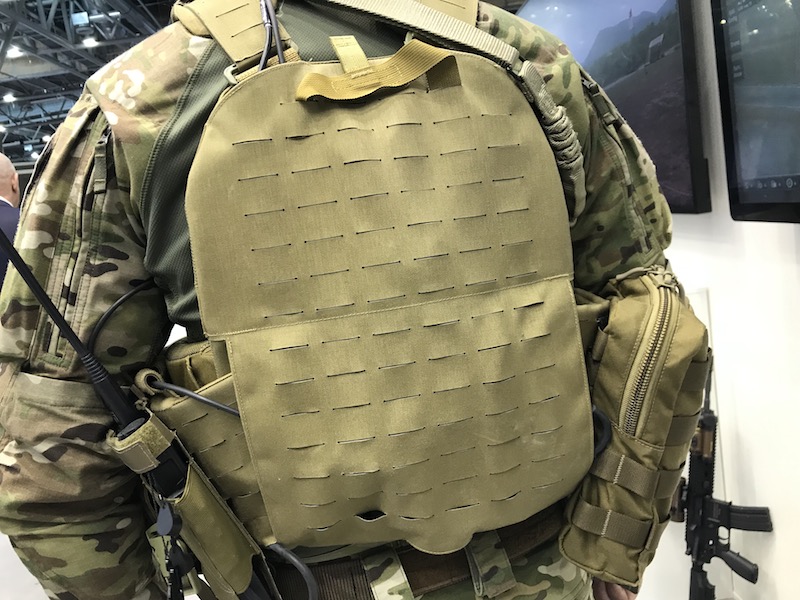 Natürlich ist die Entwicklung ein experimentelles Herantasten an die Möglichkeiten eines elektronischen Systems, das Männer und Fahrzeuge zusammenführt und im Gefecht nützt. 2017 konnte Rheinmetall vermelden, dass die Bundeswehr sich mehr IdZ holt. Seither ist auch viel Zeit in der Weiterentwicklung vergangen. Das oben ist sozusagen der neue elektronische Rücken. Wo vorher ein großer Kasten war, ist jetzt angenehmerweise nichts mehr zu sehen.
Natürlich ist die Entwicklung ein experimentelles Herantasten an die Möglichkeiten eines elektronischen Systems, das Männer und Fahrzeuge zusammenführt und im Gefecht nützt. 2017 konnte Rheinmetall vermelden, dass die Bundeswehr sich mehr IdZ holt. Seither ist auch viel Zeit in der Weiterentwicklung vergangen. Das oben ist sozusagen der neue elektronische Rücken. Wo vorher ein großer Kasten war, ist jetzt angenehmerweise nichts mehr zu sehen.
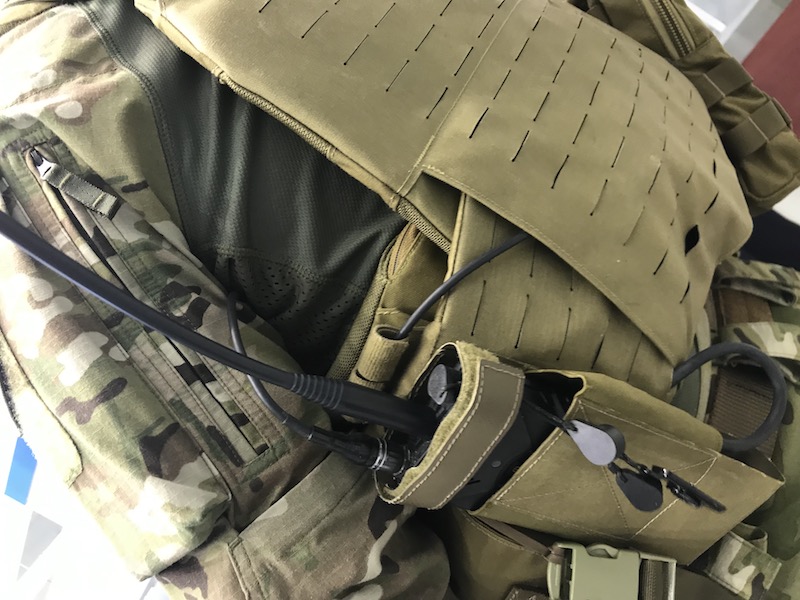 Beim seitlichen Blick erkennt man einen Ausbeulung. In der hinteren unteren Plattentasche befindet sich das USB Hub, an dem alle Gladius 2.0 Komponenten flexibel angeschlossen werden können, davor sieht man das Funkgerät, sehr klassisch in einer eigenen Tasche seitlich am Plate Carrier montiert.
Beim seitlichen Blick erkennt man einen Ausbeulung. In der hinteren unteren Plattentasche befindet sich das USB Hub, an dem alle Gladius 2.0 Komponenten flexibel angeschlossen werden können, davor sieht man das Funkgerät, sehr klassisch in einer eigenen Tasche seitlich am Plate Carrier montiert.
 Und vorne weiter die Energieversorgung. Die Batterie/der Akku steckt ein einer Art Magazintasche, ist schnell und handlich zu wechseln, wenn der Saft ausgeht.
Und vorne weiter die Energieversorgung. Die Batterie/der Akku steckt ein einer Art Magazintasche, ist schnell und handlich zu wechseln, wenn der Saft ausgeht.
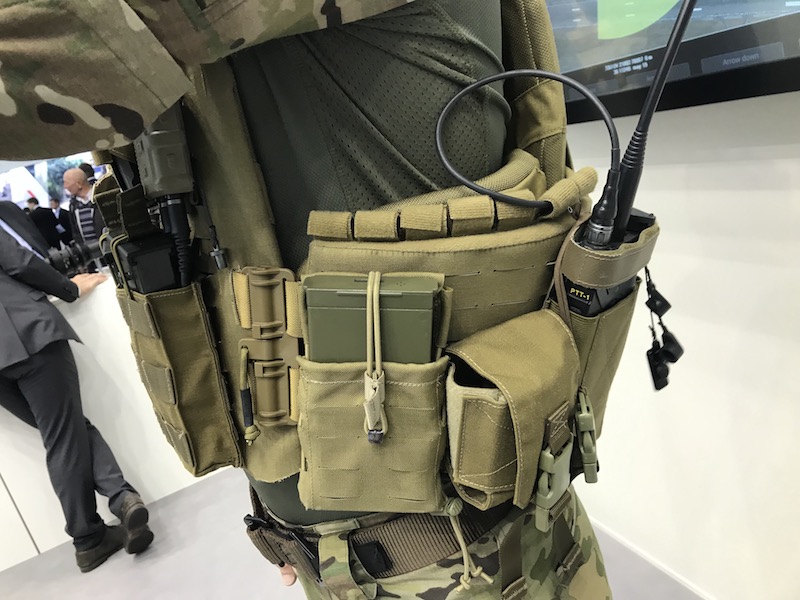 Hie noch einmal das ganze seitliche Setting. Beachte die Kabeltunnel aus Klettstreifen am seitlichen Cumberbund.
Hie noch einmal das ganze seitliche Setting. Beachte die Kabeltunnel aus Klettstreifen am seitlichen Cumberbund.
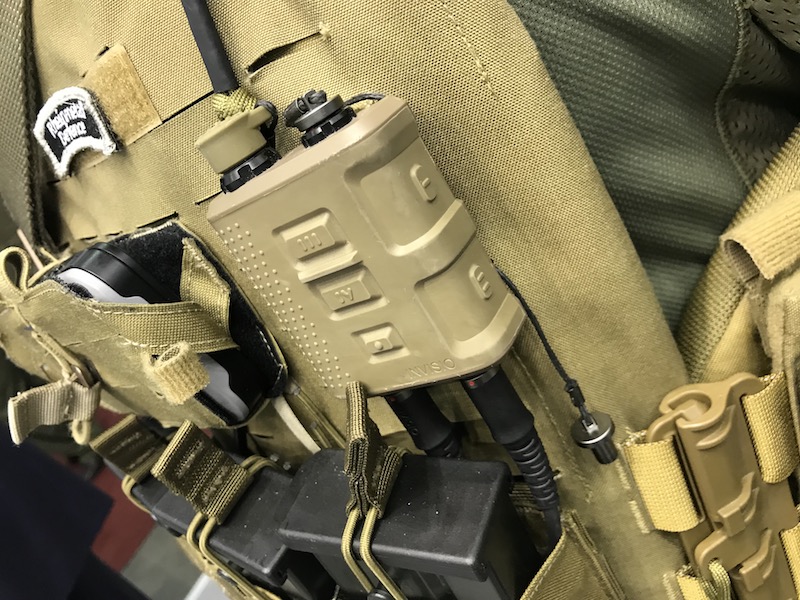 Und weil man das Rad nicht jedesmal neu erfinden muss, greift GLADIUS 2.0 auch auf bestehende Komponenten von anderen Firmen zurück. Wir hätten hier auf die INVISIO V60 als „tactical communication hub“ getippt, ein kleiner Alleskönner, mehr als nur eine normale PTT. Die technischen Daten zum Gerät seht ihr im dem Gerätenamen hinterlegten Link.
Und weil man das Rad nicht jedesmal neu erfinden muss, greift GLADIUS 2.0 auch auf bestehende Komponenten von anderen Firmen zurück. Wir hätten hier auf die INVISIO V60 als „tactical communication hub“ getippt, ein kleiner Alleskönner, mehr als nur eine normale PTT. Die technischen Daten zum Gerät seht ihr im dem Gerätenamen hinterlegten Link.
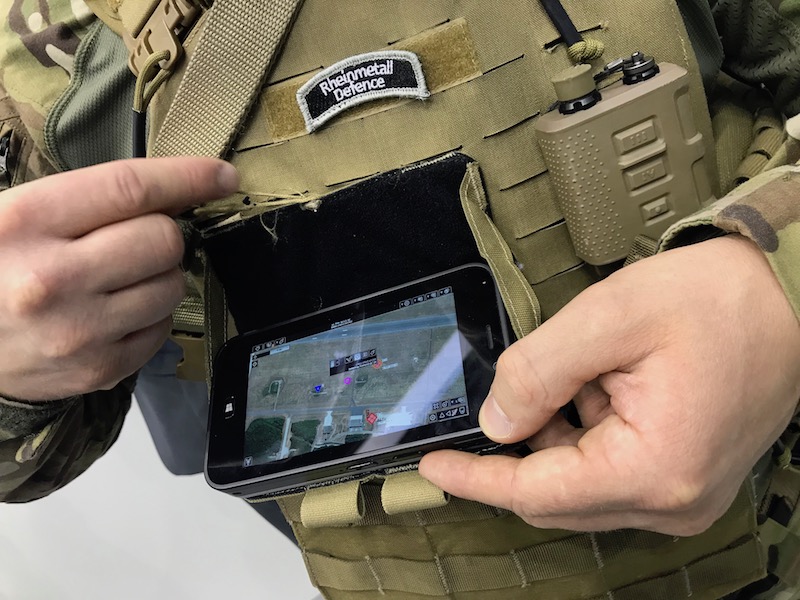 Nein, das ist nicht dazu dazu, dass der Soldat stets Facebook- oder Youporn-Zugriff hat. Dieser sehr kleine Bildschirm ist sozusagen das optische Kommunikationsmittel für den Soldaten, wo er die Daten vom Gefechtsfeld bekommt und auch Informationen weitergeben kann. „Führungsrechner“, sagt der militärisch-deutsche Begriff dazu. Der kleine Tablet ist äußerst praktisch …
Nein, das ist nicht dazu dazu, dass der Soldat stets Facebook- oder Youporn-Zugriff hat. Dieser sehr kleine Bildschirm ist sozusagen das optische Kommunikationsmittel für den Soldaten, wo er die Daten vom Gefechtsfeld bekommt und auch Informationen weitergeben kann. „Führungsrechner“, sagt der militärisch-deutsche Begriff dazu. Der kleine Tablet ist äußerst praktisch …
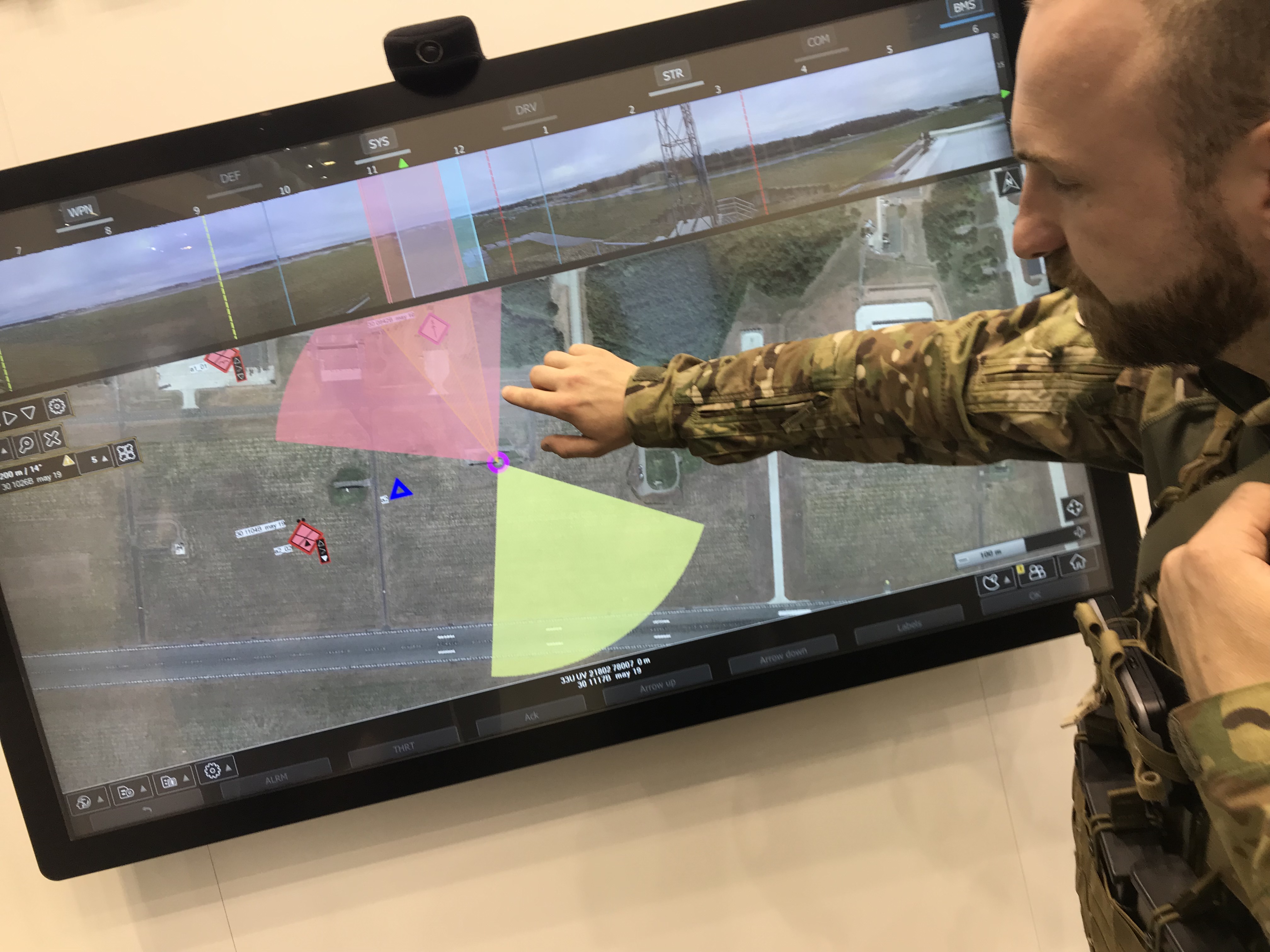 … und am großen Bildschirm besser zu erklären. Wir haben uns das ja nur kurz angeschaut, aber es ist schon sehr erstaunlich, was man damit alles machen kann. Da sind verschiedene Stellungen markiert, man weiß wo die Kameraden auf der Karte sind und der Kommandant hat auch gleich den Beobachtungsbereich festgelegt.
… und am großen Bildschirm besser zu erklären. Wir haben uns das ja nur kurz angeschaut, aber es ist schon sehr erstaunlich, was man damit alles machen kann. Da sind verschiedene Stellungen markiert, man weiß wo die Kameraden auf der Karte sind und der Kommandant hat auch gleich den Beobachtungsbereich festgelegt.
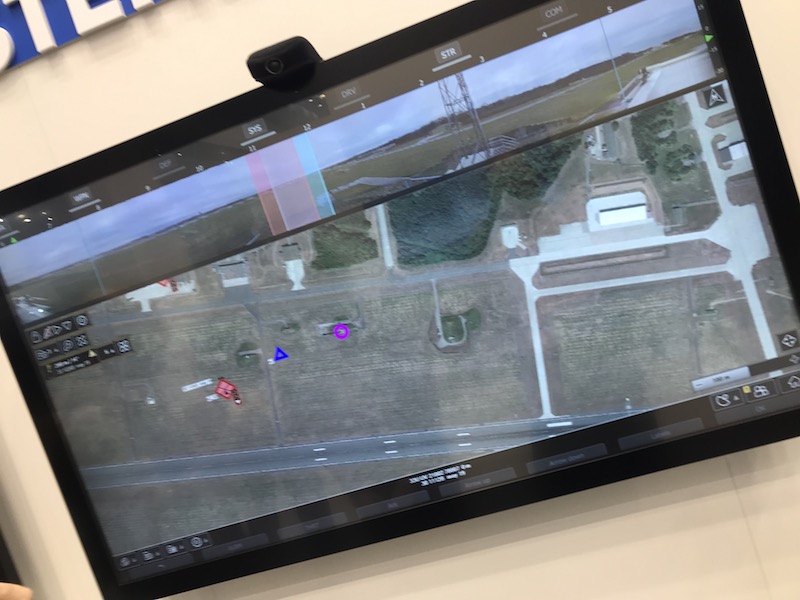 Der Streifen oben ist zum Beispiel eine Kamera, wie sie auf einem Fahrzeug montiert ist, und beobachtet „live“. Unten diverse taktische Zeichen auf der Karte. Gibt es zum etwa verdächtige Geräusche von der Waldkante im Norden, wird das vom Erstendecker eingetragen, sofort wissen das alle, wenn nötig sind die Waffensysteme darauf ausgerichtet. Eine Drohne, die aufklärt, kann einbezogen werden. Es gibt gibt unglaubliche viele Möglichkeiten.
Der Streifen oben ist zum Beispiel eine Kamera, wie sie auf einem Fahrzeug montiert ist, und beobachtet „live“. Unten diverse taktische Zeichen auf der Karte. Gibt es zum etwa verdächtige Geräusche von der Waldkante im Norden, wird das vom Erstendecker eingetragen, sofort wissen das alle, wenn nötig sind die Waffensysteme darauf ausgerichtet. Eine Drohne, die aufklärt, kann einbezogen werden. Es gibt gibt unglaubliche viele Möglichkeiten.
Spannend ist das nicht nur für den einzelnen Schützen, sondern gerade im Verbund mit einem High-Tech-Schützenpanzer wie dem Puma. Für Fahrzeug und Gruppe und die gesamte Einheit ist diese Variante des schnellen Informationsmanagements und einer Kommunikation 2.0 durchaus als revolutionär zu bezeichnen. Das kommt auch bei der Truppe an: wir hatten auf der IDET die Möglichkeit mit einem Puma-Kommandanten zu sprechen, der seine volle Begeisterung über die technischen Möglichkeiten weitergegeben hat.
HIER geht es zum IDZ bei Rheinmetall.
RHEINMETALL DEFENCE im Internet: rheinmetall-defence.com
IDET 2019 im Internet: www.bvv.cz/de/idet
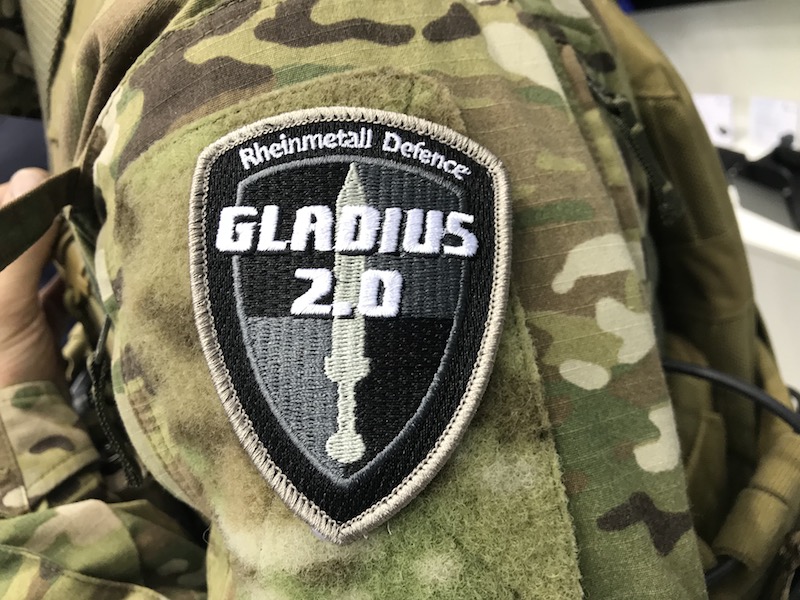 Und einen coolen Patch gibt es auch schon: da kann nix mehr schief gehen.
Und einen coolen Patch gibt es auch schon: da kann nix mehr schief gehen.
SPARTANAT ist das Online-Magazin für Military News, Tactical Life, Gear & Reviews.
Schickt uns eure News: [email protected]
Werbung
Hol Dir den wöchentlichen SPARTANAT-Newsletter.
Dein Bonus: das gratis E-Book von SPARTANAT.


